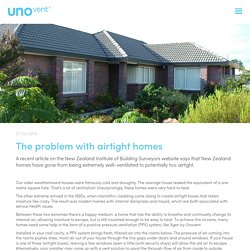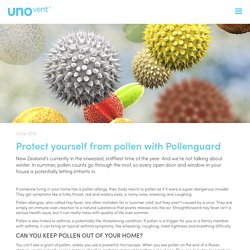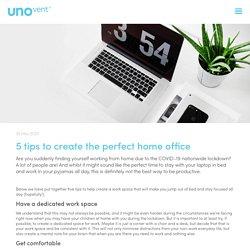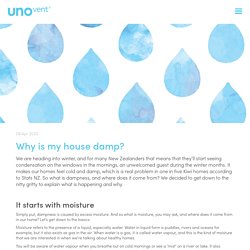

Unovent
Unovent’s range of home ventilation systems include whole house ventilation such as the revolutionary ductless system Xgen, as well as extractor fans for bathrooms, kitchen rangehoods for kitchens, and attic fans.
How home ventilation systems can make your family happier. When it comes to meeting our needs, it stands to reason that meeting our most fundamental and basics needs is generally on the top of our list.

Saving up to buy a first home, or thinking about what to buy for groceries to make a healthy dinner – these are basic needs that take up a lot of our headspace. This behaviour is well-expressed in Maslow’s ‘Hierarchy of Needs.’ This theory is common, and you may have heard of it before. Psychologist Abraham Maslow developed the theory, proposing that humans have a hierarchy of needs, in which our basic requirements at the bottom of the hierarchy need to be fulfilled before we can attend to the needs that are higher up. At the bottom, we have physiological needs – food, water, warmth, and rest. So how do we ensure that our homes provide adequate warmth, rest and safety, so our families can meet these basic needs, and work their way up on the pyramid? Unventilated homes harbour condensation, leading to the development of dangerous black mould.
Get an intelligent ventilation system for summer comfort. Invented in Tauranga (another fine example of Kiwi ingenuity), the Unobrain decides 24/7 whether the air in your roof space is suitable for exchanging with the air in your home.

If the roof space air is too cold, too moist or too hot, Unobrain puts the Xgen by Unovent system on pause, unlike some other home ventilation systems that will continue to pump the hot, moist or cold air into your home until you turn it off manually. This means that getting a Xgen by Unovent PPV (positive pressure ventilation) system installed in your home is a no-brainer, because the Unobrain does all the thinking for you. You can confidently leave your intelligent ventilation system on permanently, knowing there’s a computerised monitoring system in your ceiling constantly analysing the quality of roof space air.
When conditions are bad the system turns off - but as soon as the conditions improve Xgen kicks into life again and draws fresh air into your home – automatically. The problem with airtight homes. Our older weatherboard houses were famously cold and draughty.

The average house leaked the equivalent of a one metre square hole. That’s a lot of ventilation! Unsurprisingly, these homes were very hard to heat. The other extreme arrived in the 1990s, when monolithic cladding came along to create airtight boxes that retain moisture like crazy. The result was modern homes with internal dampness and mould, which are both associated with serious health issues. Are you breathing polluted air? There’s growing evidence that the air in New Zealand’s cities is less than clean.

Air quality is generally measured by the amount of particulate (PM) matter in the air, which gets there from sources like car exhausts and fires used for heating. In areas where people use wood burners to heat their homes, the amount of PM in internal air is a worry. Protect yourself from pollen with Pollenguard. If someone living in your home has a pollen allergy, their body reacts to pollen as if it were a super-dangerous invader.

They get symptoms like a tickly throat, red and watery eyes, a runny nose, sneezing and coughing. Pollen allergies, also called hay fever, are often mistaken for a ‘summer cold’, but they aren’t caused by a virus. They are simply an immune over-reaction to a natural substance that plants release into the air. 5 tips to create the perfect home office. Below we have put together five tips to help create a work space that will make you jump out of bed and stay focused all day (hopefully!).

Have a dedicated work space We understand that this may not always be possible, and it might be even harder during the circumstances we’re facing right now when you may have your children at home with you during the lockdown. But it is important to at least try, if possible, to create a dedicated space for work. Maybe it is just a corner with a chair and a desk, but decide that that is your work space and be consistent with it.
This will not only minimise distractions from your non-work everyday life, but also create a mental note for your brain that when you are there you need to work and nothing else. Get comfortable When we say get comfortable we don’t mean that you should work from bed! This will not only minimise strain and body aches, but it will also help prevent fatigue and improve efficiency. Get the lighting right Get some green Breathe easy. Why is my house damp? It starts with moisture Simply put, dampness is caused by excess moisture.

And so what is moisture, you may ask, and where does it come from in our home? Let's get down to the basics. Moisture refers to the presence of a liquid, especially water. How to reduce dampness in your home. Why is poor home ventilation terrible for our health? Poor home ventilation, or an inefficient home ventilation system, leads to a damp and mouldy space.

Exposure to such an environment is associated with a variety of health effects, and can lead to the development of illness if left unchecked. Here’s a few reasons why poor home ventilation is terrible for our health: 1. Ventilation systems vs dehumidifiers: What’s the difference? However, some people may think that simply using a dehumidifier to “dehumidify” the air and reduce moisture is enough.

More often than not, this is not the case. Ventilation systems and dehumidifiers may have overlapping benefits, but they work very differently. Generally, dehumidifiers don’t provide the desired air impact that people expect. How to Reduce Condensation? It starts with moisture Simply put, dampness is caused by excess moisture.

And so what is moisture, you may ask, and where does it come from in our home? Let's get down to the basics. Moisture refers to the presence of a liquid, especially water. Water in liquid form is puddles, rivers and oceans for example, but it also exists as gas in the air. You will be aware of water vapour when you breathe out on cold mornings or see a ‘mist’ on a river or lake. How to Reduce Dampness? In our last blog post we explored what dampness is and how it comes about, so let's tackle the problem of getting rid of it! But first, let's recap how it is created so that we can understand how to reduce it.
In short, dampness is caused by excess moisture. Moisture in the home is introduced in many different ways, for example by cooking, showering, washing and even breathing! A regular family can produce astonishing amounts of moisture without knowing it: Breathing actively can produce 0.2 litres per hour per personDrying clothes inside can add 5 litres of moisture per loadCooking can add up to 3 litres a dayShowers and baths produce 1.5 litres per person per day.One person spending an average of 14 hours (including sleep) at home will produce 0.03 litres of sweat every hour. No wonder so many of our homes are unhealthy! While the creation of moisture in your home is unavoidable – it will always be there – it is important to try to reduce it as much as possible. Reduce Condensation in Bedroom. How to Reduce Mould?
Bathroom Extractor Fan NZ. Extractor Fan. Kitchen Air Extractor. Kitchen Ceiling Extractor Fan NZ. Ceiling Extractor Fan NZ. Pollen Air Filter. If someone living in your home has a pollen allergy, their body reacts to pollen as if it were a super-dangerous invader. They get symptoms like a tickly throat, red and watery eyes, a runny nose, sneezing and coughing.
Pollen allergies, also called hay fever, are often mistaken for a ‘summer cold’, but they aren’t caused by a virus. They are simply an immune over-reaction to a natural substance that plants release into the air. Straightforward hay fever isn’t a serious health issue, but it can really mess with quality of life over summer. Pollen is also linked to asthma, a potentially life-threatening condition. You can’t see a grain of pollen, unless you use a powerful microscope. Several years ago, a research study was conducted to find out how much pollen could be found in indoor air – and it found that substantial amounts of pollen is polluting the air indoors. Xgen with Pollenguard also works for areas of New Zealand that have an air pollution problem. Kitchen Rangehoods NZ. Whole House Ventilation. Home Ventilation System. Solar-Powered Extractor Fan.